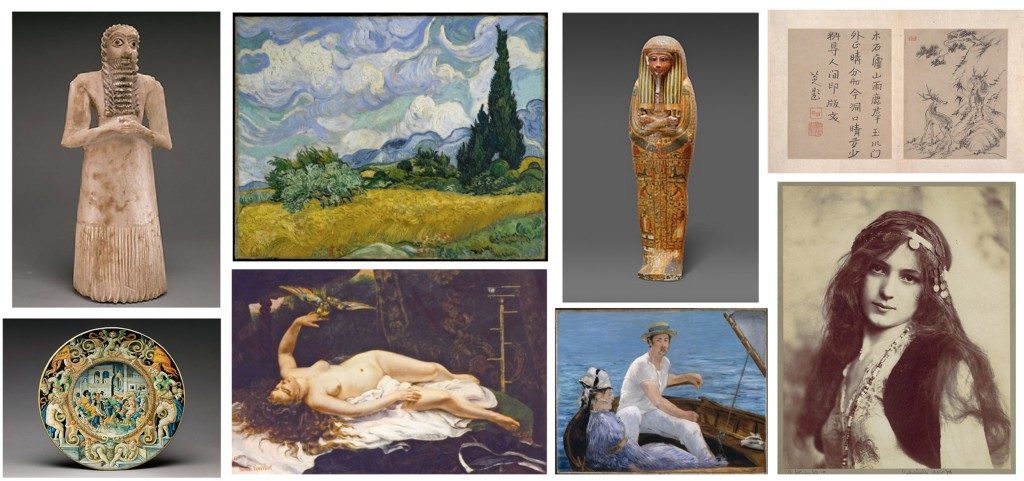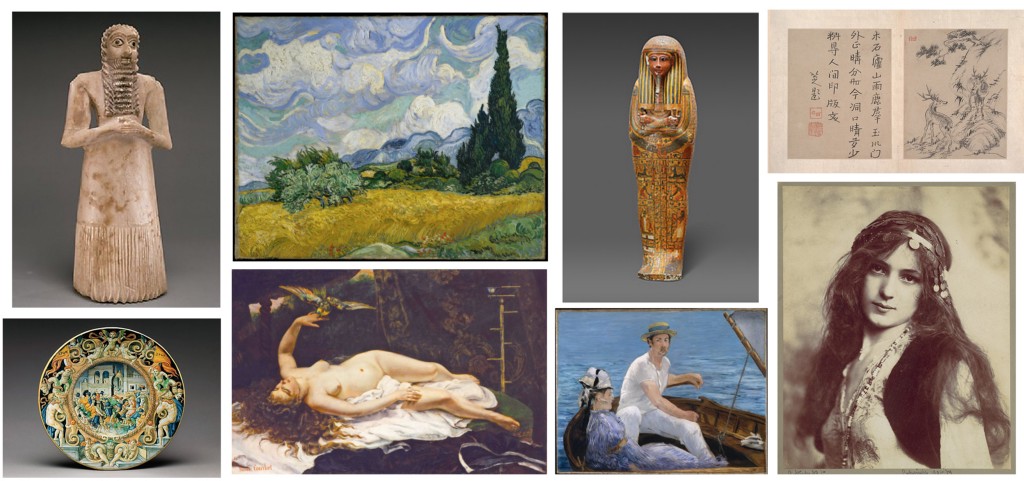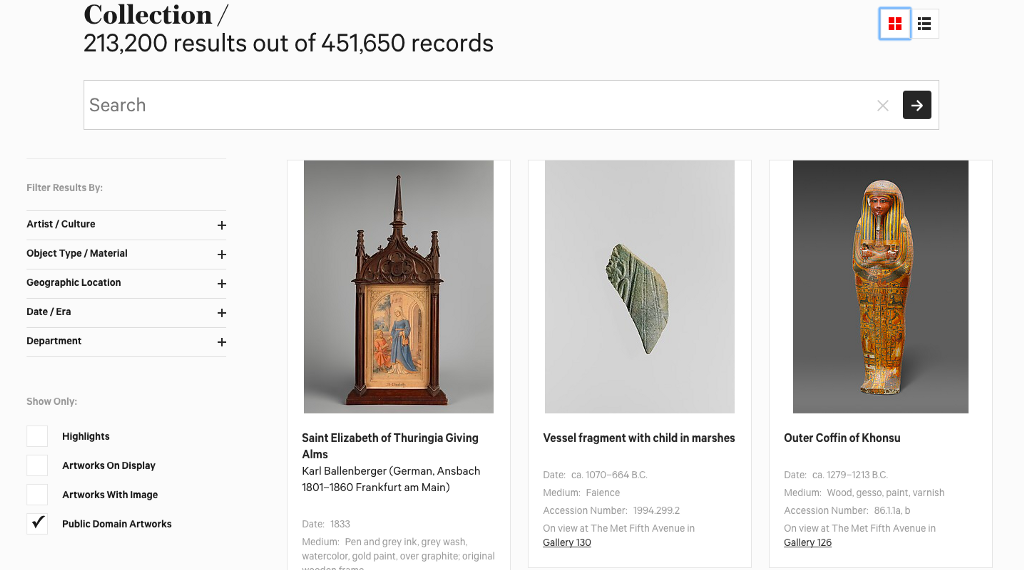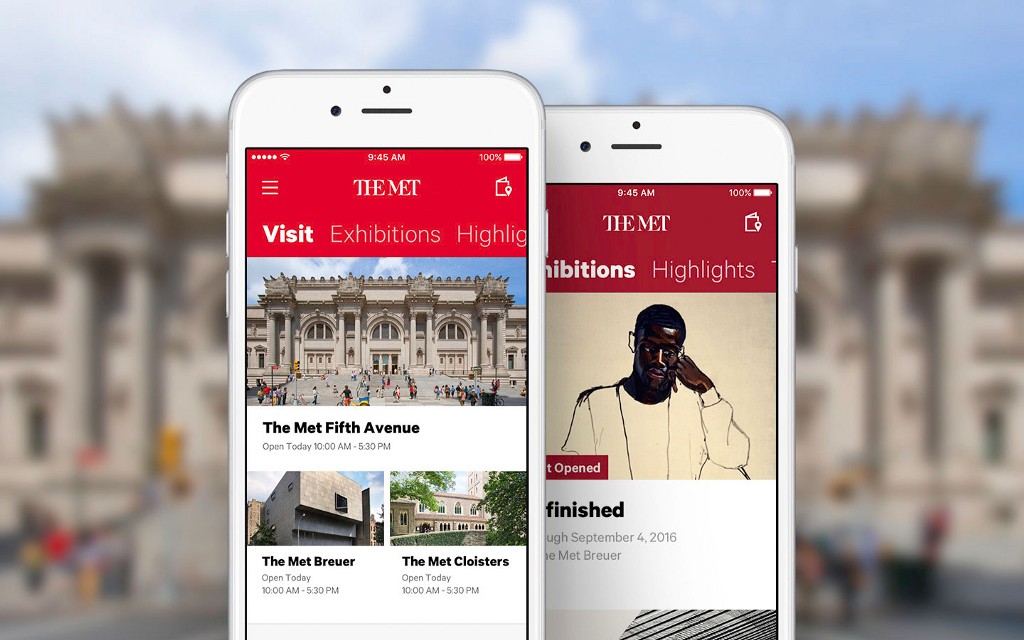
A Deep Dive into The Met’s Collection Information Digital Work System
July 20, 2018 - All
Interview with Jennie Choi, Manager of Collection Information at The Metropolitan Museum of Art

The Metropolitan Museum of Art, as the largest art museum in the United States, has 100 curators and 1.5 million artworks in their permanent collection. The Digital department, founded in 2008, has three core teams that are equipped with different core skills and work on separate missions.
According to Loic Tallon, chief digital officer at The Met, the content team serves as the digital storyteller, and takes responsibility for editorial work, audio- and video-making, as well as onsite digital exhibition curation. The Collection Information team works on building the collection database, taking responsibility for access management, as well as license related matters. The product development team is made up of product managers, user experience designers, and software developers. Based on understanding the audience’s need, their primary jobs are digital product design, development, and management.
It was my pleasure to interview Jennie Choi, the General Manager of Collection Information who has been working in The Met for 22 years. Choi oversees an 8-person team in the Digital department that was formed in 2014. The team covers three areas of work: image right permissions, digital assets management, and collection management.
Areas of Responsibility
Image Rights Permissions: There are two people responsible for managing image rights permissions. “We have many images in public open access that people can use for different purpose for free, but when people want to access high-quality image or the images that are under copyright, like the photo of Picasso or Andy Warhol’s work, the team needs to clear the rights first,” Choi said in the interview.
Digital Assets Management (DAM): The digitized contents — photograph, audio recording, video, pdf, etc. are storage in the DAM system. The system also runs curatorial object content, as well as location and inventory information. Three staff members work in this domain.
Collection Management: The essence of the Collection Information team is the digital experts from the Image Library and Collection Management Department. They all have a lot of experience working on object cataloguing. Currently, there are over 1.5 million objects in permanent collection, and 600,000 records in the database, with over 450,000 of them online. All the new data are stored in the system, but a lot of the previous information are still only recorded on the hardcopy catalogue card. Therefore, it is one of the major projects for Choi’s team to work with curatorial departments to convert the data into digital form.

Commonly Used Systems — TMS, NetX, and Jira
Three management systems serve as the main tools to achieve the aforementioned areas of work of the Collection Information team. First, The Museum System (TMS) organizes the collection management work. It is the most used information management system by American museums. Second, the NetX serves as the DAM system in Met. Museums like the MoMA, Brooklyn Museum are using NetX to do the digital assets management work too. The third tool is Jira, a task tracking system used around the whole department. It provides bug tracking, to-do-work tracking and project management functions. These three systems are all interconnected. NetX sends the images to TMS, and TMS sends the object information to NetX, this process happens every night. At the same time, Jira is integrated more with NetX than with TMS, and supports these two systems through different apartments’ daily work. Within The Met, all the staff uses NetX. TMS is more exclusive; only 800 people can access the system, including curatorial and registrar department. Works related to image-straight function like exhibition planning, loans, shipping and inventory could all be tracked in the TMS system. Because the database in TMS is huge, it backups every night in order to avoid losing any information. The main jobs around these 3 systems for Choi’s team are system setting at the beginning, system upgrading, requesting new features, users training, as well as system daily maintenance.
The online and onsite digital contents highly rely on the information in the TMS system. The curatorial department puts the data in TMS, and the website updates the information from TMS every night. The website pulls out the data that are located in separate fields in the TMS, formats the data, and combines them together. Meanwhile, the digital installations in the gallery, such as the labels on digital screens within Greek and Roman gallery and the Asian gallery, also obtain data from the TMS every night.
During the interview, Choi also mentioned that one of the museum’s priorities is collection documentation which is a broad category and is highly related to Collection Information’s teamwork. The artist introduction, title, data, exhibition history, publication history, location in the storage, etc. all need to be documented appropriately in the system database. The team also tracks the data, such as how many objects are catalogued per month and how many images the digital apartment has added every quarter. At the same time, Choi’s team needs to make sure all the images in NetX are searchable and can be downloaded by people.
Goals for Upcoming Year
NetX upgrading: According to Choi, TMS upgrades every two to three years and NetX upgrades once a year. Choi’s team is going to upgrade the NetX system in the next three months. “We need to do the system test to make sure nothing is broken and add new features to make sure it is convenient to use. It’s really stressful work, because so many people rely on the system and it is involved in their daily work. The system is so important that if it doesn’t work well the whole museum’s work will shut down,” Choi said.
Expanding the use of three systems within museum: Besides of the day-to-day work to make sure the systems work appropriately, Choi also wants to make the staff in The Met understand the importance of TMS and NetX, and to expand the information available in the digital database. “We’re hoping more staff use the systems more,” Choi emphasized. Choi’s team also are involved in the process of website improvement in the next year.

Challenges
There is a full-time employee in Choi’s team who helps the curators across different apartments enter the data in the right field. However, in the consideration of the constant staff turnover in curatorial departments, the system training work needs to be carried out consistently in order to make sure the new staff or volunteers can understand how to use the system correctly. Another challenge for Choi and her team is they have to put a lot of efforts to tackle down the “dirty data” that already exists in the system. At the same time, since there are almost 30 new exhibitions in the museum every year, the team also needs to support and maintain the new data around these exhibitions.
Opportunities
When we talked about the museum professionals’ concern that the audience would just stay online with free access to the amazing detailed artwork pictures instead of going to the physical exhibitions, Choi believed that “there is nothing to replace the experience of looking at artworks in person.” Digital platforms help the museum to outreach the remote audiences. “We want to attract more international visitors in different countries, and at the same time, to reach the visitors who never think about visiting the museum at all. We are expanding our demographics and exposing our collections by taking advantage of digital formats,” said Choi. Moreover, Digital platforms also supplement the onsite experience for the audiences. Choi pointed out that only about 6% of Met’s collections is on-view. It means that visitors cannot see more than 94% collection onsite, but they can review them on the online platform. For instance, the light-sensitive works like textile-works on paper cannot be put on-view for a long time, but they can be presented online forever. “Some visitors may not be familiar with the materials, but with the help of online information, we can present the objects in a very clear and comprehensive way to make the visitors understand and appreciate,” Choi added.
The functionality of collection documentation and cataloguing work has been existed for over a hundred years in The Met since 1907. However, the tools that the museum uses have been changed a lot — from the most archaic hardcopy catalogue card to robust computer systems. Choi’s team’s work insures that the collections data is available inside to museum staff and outside to the wider museum audience. The digital content enables The Met’s audiences to access the information about the collections, anytime, anywhere. This information accessibility is created by the invisible but tireless work of the whole digital department behind the scene. It is the Collection Information team that helps The Met to adapt to this change, and keep its continued relevance and success in this digital age.
A Deep Dive into The Met’s Collection Information Digital Work System was originally published in Museums and Digital Culture – Pratt Institute on Medium, where people are continuing the conversation by highlighting and responding to this story.